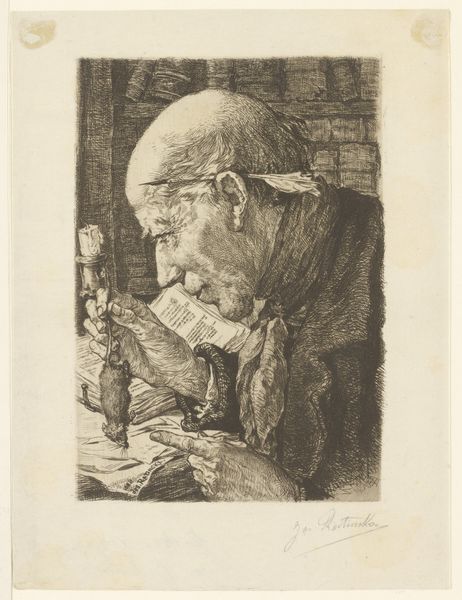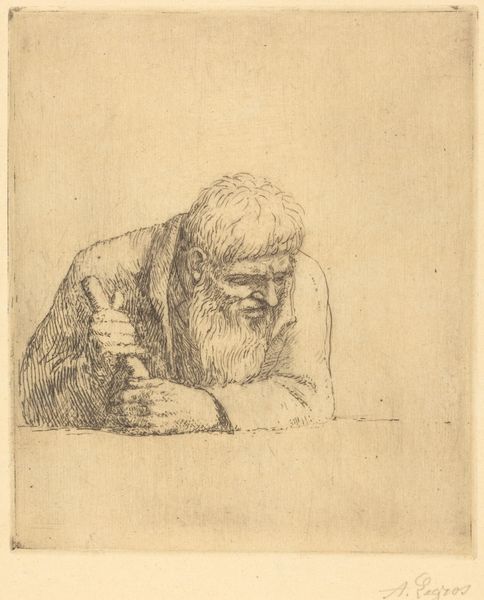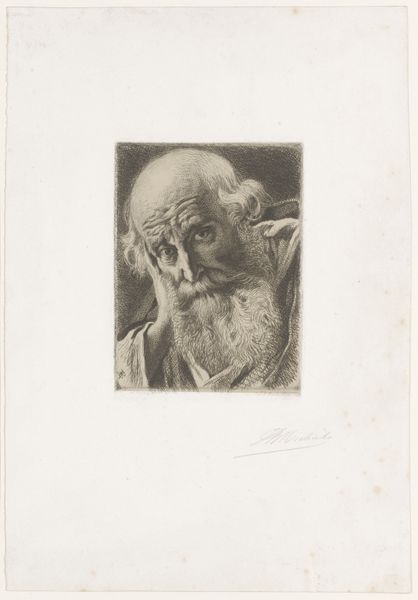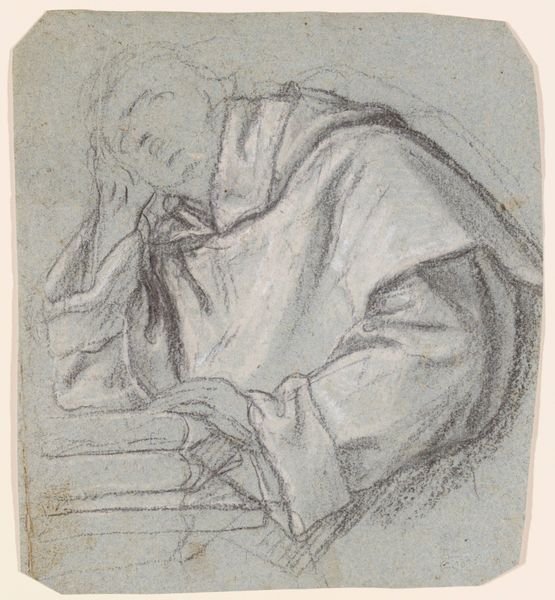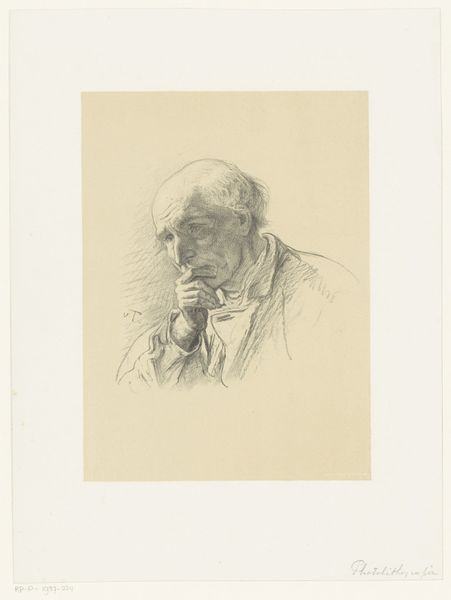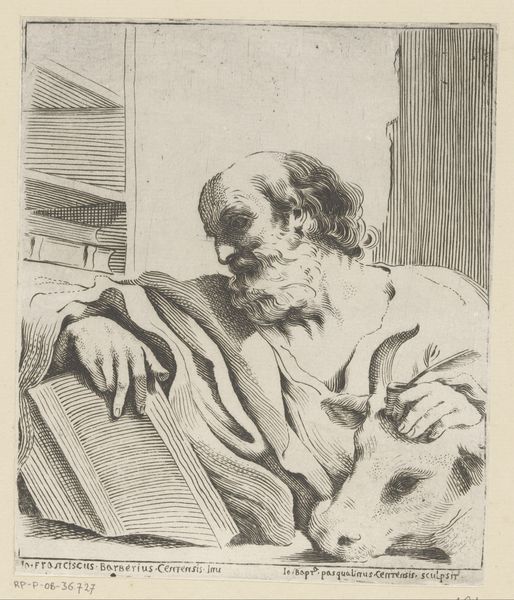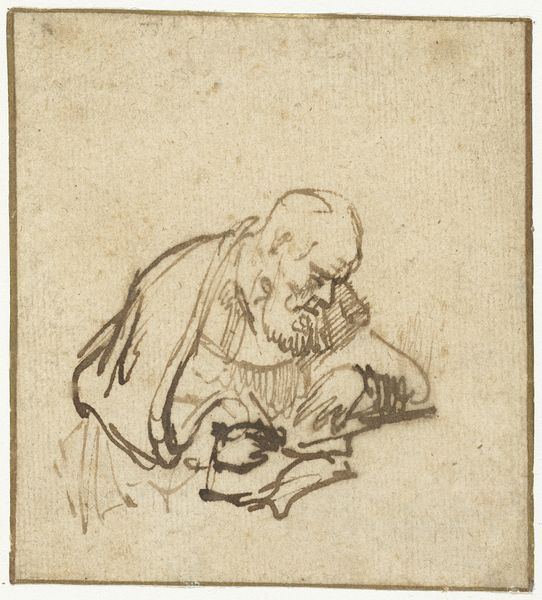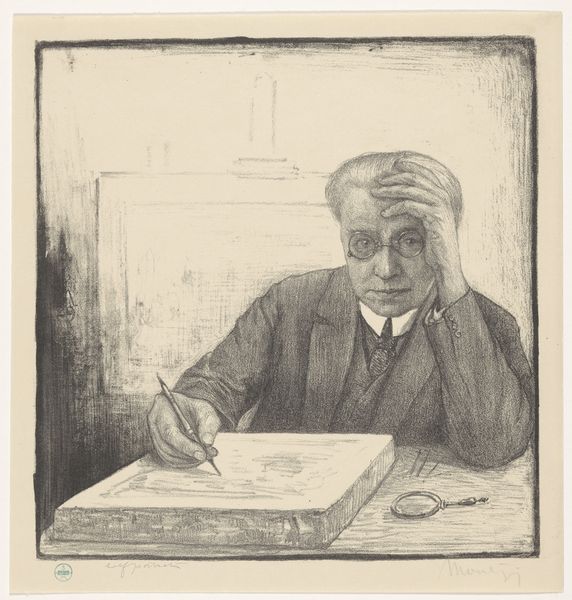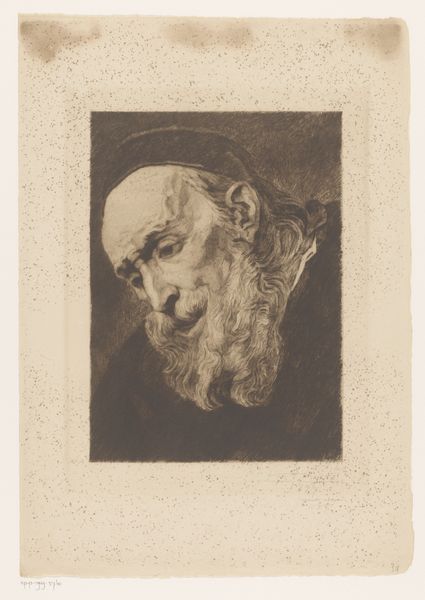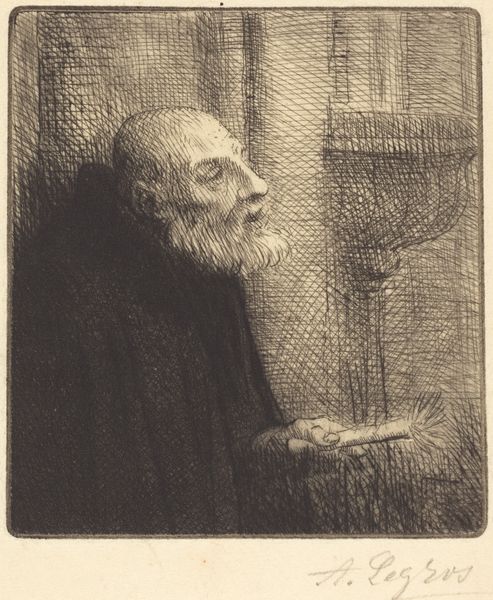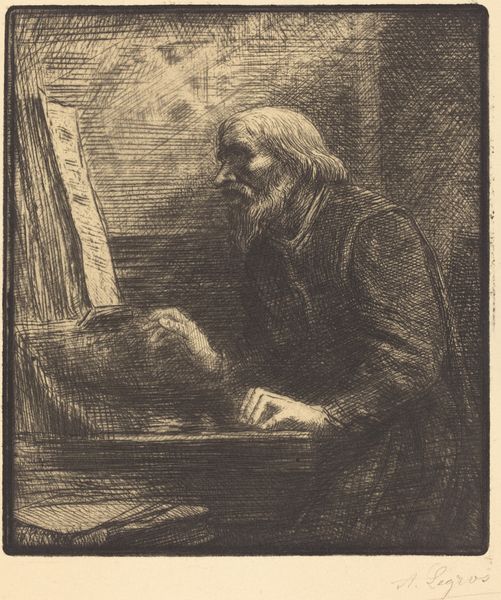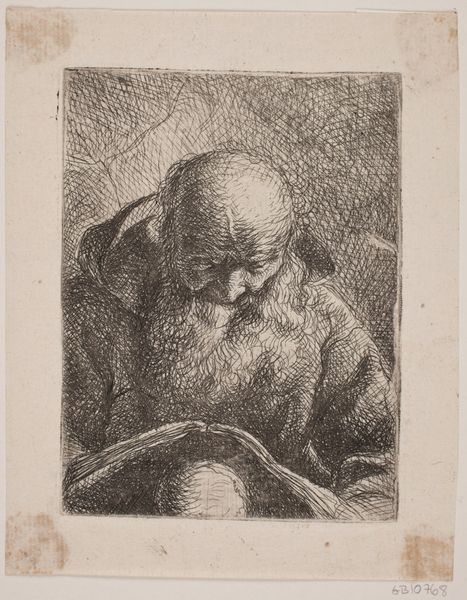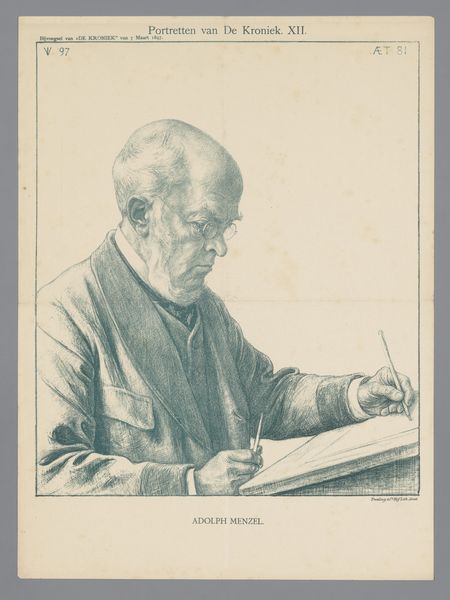
drawing, pencil
#
portrait
#
drawing
#
facial expression drawing
#
pencil sketch
#
caricature
#
figuration
#
portrait reference
#
pencil drawing
#
pencil
#
animal drawing portrait
#
portrait drawing
#
facial portrait
#
portrait art
#
fine art portrait
#
realism
Dimensions: height 334 mm, width 414 mm
Copyright: Rijks Museum: Open Domain
Editor: This drawing, "Oude man aan tafel" from 1914 by Elias Smalhout, appears to be made of pencil on paper. The shading creates such an interesting texture to the work, almost like looking at an etching or engraving. What do you see when you look at this piece? Curator: I’m struck by how the work draws attention to the physical realities of aging and labor, evident in the deeply etched lines of the man's face and hands. Consider the artist's choice of pencil—a readily available and relatively inexpensive material. Was Smalhout consciously reflecting a democratization of art production through this material? Editor: That’s interesting. I hadn't thought about the social implications of pencil as a medium. It makes me wonder if the choice also reflects something about the subject's economic standing. Curator: Precisely. The deliberate emphasis on materiality forces us to contemplate the broader context: the means of production, the consumption of art, and how labor is represented. Notice how the act of drawing, a process itself rooted in labor, mirrors the very subject of the work: a man worn by time, and potentially, hard work. Do you find the framing element influences this read, making it perhaps, more of a commodity for display? Editor: It’s a thought-provoking connection. Framing adds a layer of complexity. The man may be aged and weary, yet the frame seems to put this drawing "on display". So his aging, potentially coupled with labor, becomes another form of art to be commodified. It's powerful and very sobering. Curator: Absolutely. It brings us to an examination of what, or rather *who,* gets made into art, and how. Appreciating these aspects helps unlock richer meanings within art. Editor: I hadn't considered how materials speak volumes about labor, the subject, and society, all together. Thanks so much.
Comments
No comments
Be the first to comment and join the conversation on the ultimate creative platform.

